How to make the online art service work for you
By Susan Washington
Saatchi Art, which bills itself as a free “online art advisory,” is perhaps the most successful site on the Internet for online art sales, with Rebecca Wilson (formerly a director of Saatchi Gallery in London) as its chief curator. This is an enormous free-for-all marketplace, promoting work of varying quality and appeal, but if you have a good eye you can pick out some real winners, generally at reasonable prices.
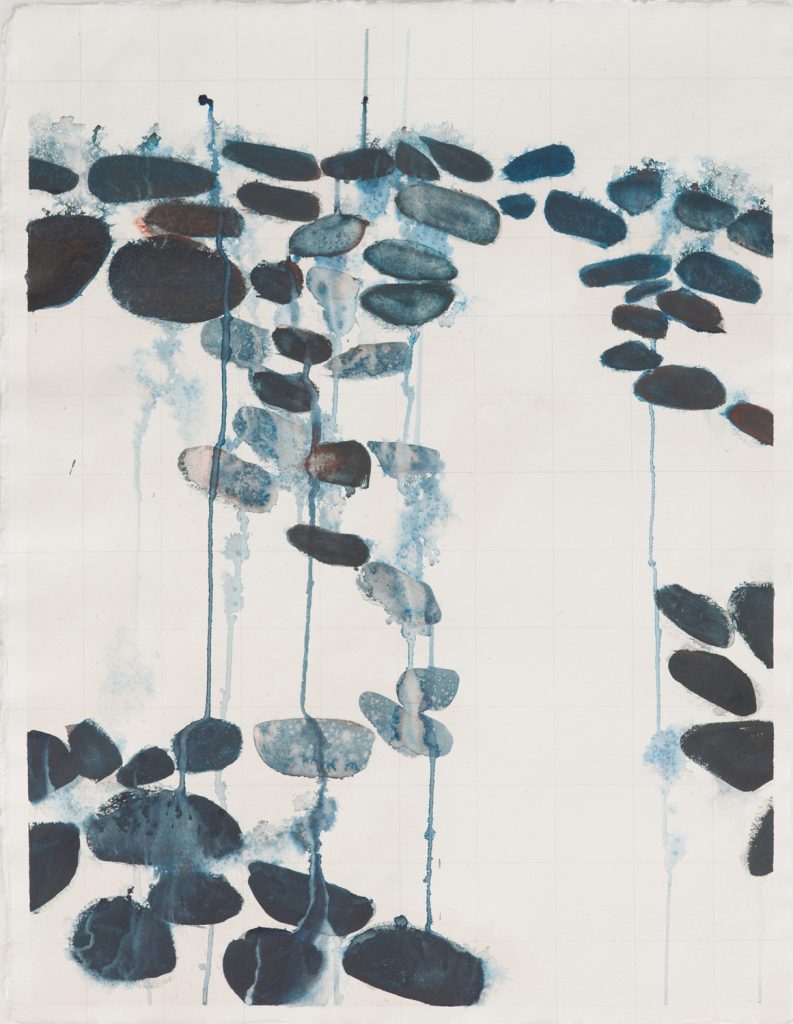
Dudley Zopp, Entre Dos Aguas #6 (2012) watercolor and pencil on Arpa handmade paper, 26 by 20 inches
For artists, it’s how you use the site that counts. When I went trolling for information to pull together a story on how well online sales work for members, Susan Washington reported that she’d had great success with Saatchi Art. Another, Dudley Zopp, was having a hard time gaining any traction at all. And so I put the two together. Susan’s advice was so sensible and detailed that I asked to share it with other readers. Below is a slightly edited version of her letter to Zopp, and a short list of tips for making Saatchi work for you. A.L.
Dear Dudley: First, I think it may be helpful if you can photograph your work in a setting, perhaps even on your studio wall. Saatchi Art gives you the option of adding five additional photos after you have uploaded your first work. I feel that potential buyers like to see the painting from several views. Perhaps a close-up of the surface, a shot from the side, or something like that. I often try to put myself in the buyer’s place and think about what I would like to see and what would make me more confident about buying art online.
I notice you are not following anyone on Saatchi Art. I believe there is a ratio, or a “cool factor,” and as on Instagram, you shouldn’t follow more people than are following you. However, to start, I think it could be beneficial if you follow some other artists whose work you truly like. There is some connectivity that shows up when you “like” other artists’ works. Also I notice that “liking” generates more listings on Google with your name. I enjoy looking through the features and the “In the Studio” section, both to discover more artists and see new work.
Find the Saatchi Art assistant curators–like Jessica McQueen and Kat Henning, to name a couple–and follow them. They are on top of the new work coming in.
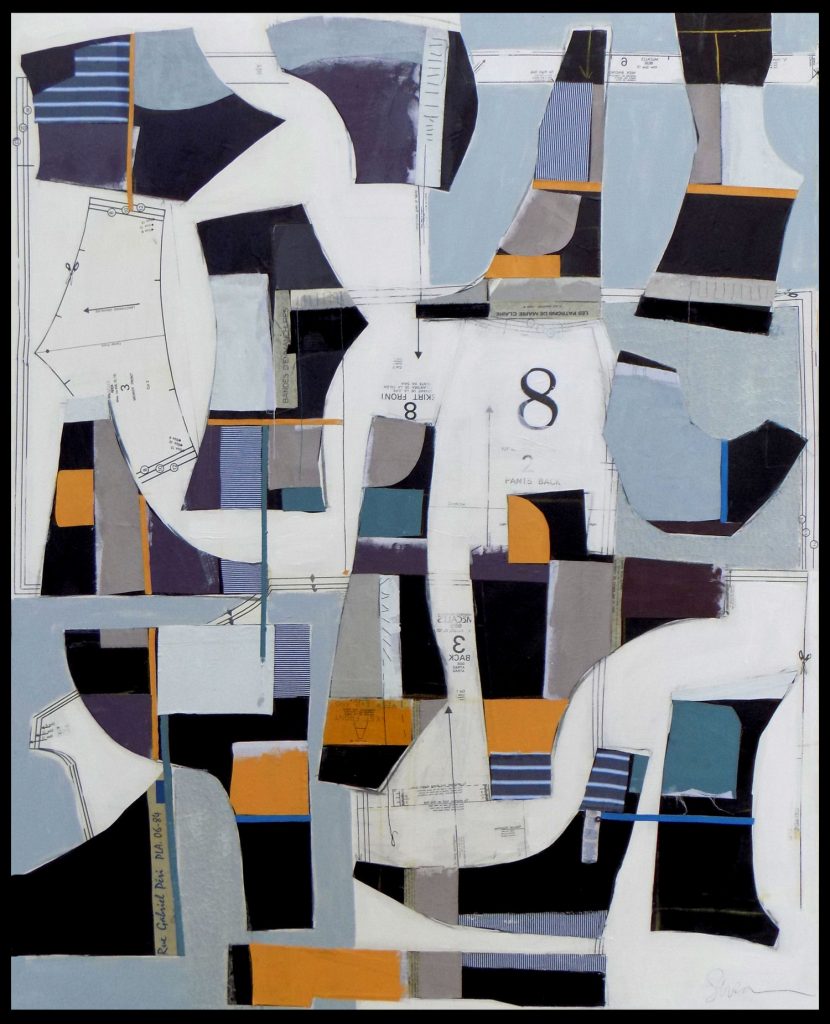
Susan Washington, Deconstructed No. 8 (2016), acrylic, vintage dress patterns, and textiles on canvas, 5 by 4 feet
Put up new work consistently–once a week, if possible. I see you do a variety of work and you are keeping Saatchi Art’s profile to a similar medium, which is great and consistent. If you have more of the same or similar, start posting on a weekly basis. The reasons for this: you give the curators an opportunity to see new work being uploaded and they may include you in the “New This Week” feature. Also, I know that the new work being uploaded to the site is looked at by at least one of the curators. You are giving yourself more opportunity to be seen.
If you have not done so already, look on the “Features” page and you will find names of the assistant curators who are building the collections. Follow them also and take a look at the new collections.
Participate in the Site
Comment on the “New Feature” sections that come out Monday afternoon. I think it’s important to show you are participating in the site. Look at the collections. Perhaps you have a favorite work in the collection or you think the curator did a good job pulling it together or there is something else that resonates with you—say so! There are tons of people that go on and post such negative things and complain that they never get featured. Stay positive and make an educated, insightful comment. It may help get you get noticed, by collectors and curators.
One of the reasons I love Saatchi Art is because there are real curators at work. They also do several online shows a year on behalf of their artists (which again is the few they select but still they are getting your name out). If you have any opportunity at all of connecting with them at any of these shows, do so. Last April, Rebecca Wilson was at the Affordable Art Fair New York, representing Saatchi Art. When I was at the fair I made a point to introduce myself to her. It was nice after interacting for some time via email to connect face-to-face. She was lovely, and I even got a photograph with her and sent it out on Instagram.
If/when you get featured, it couldn’t hurt to write a quick thank you email to the curator who featured you. I believe we have to work on these relationships and though Saatchi art is not a bricks-and-mortar gallery I think it’s important. I know a lot of times I will get an email from one and I like to be prompt in responding. If they have a question about a commission for a potential client or want to see if a work is available, it’s important to make their job easier by having clear and prompt communication with them.
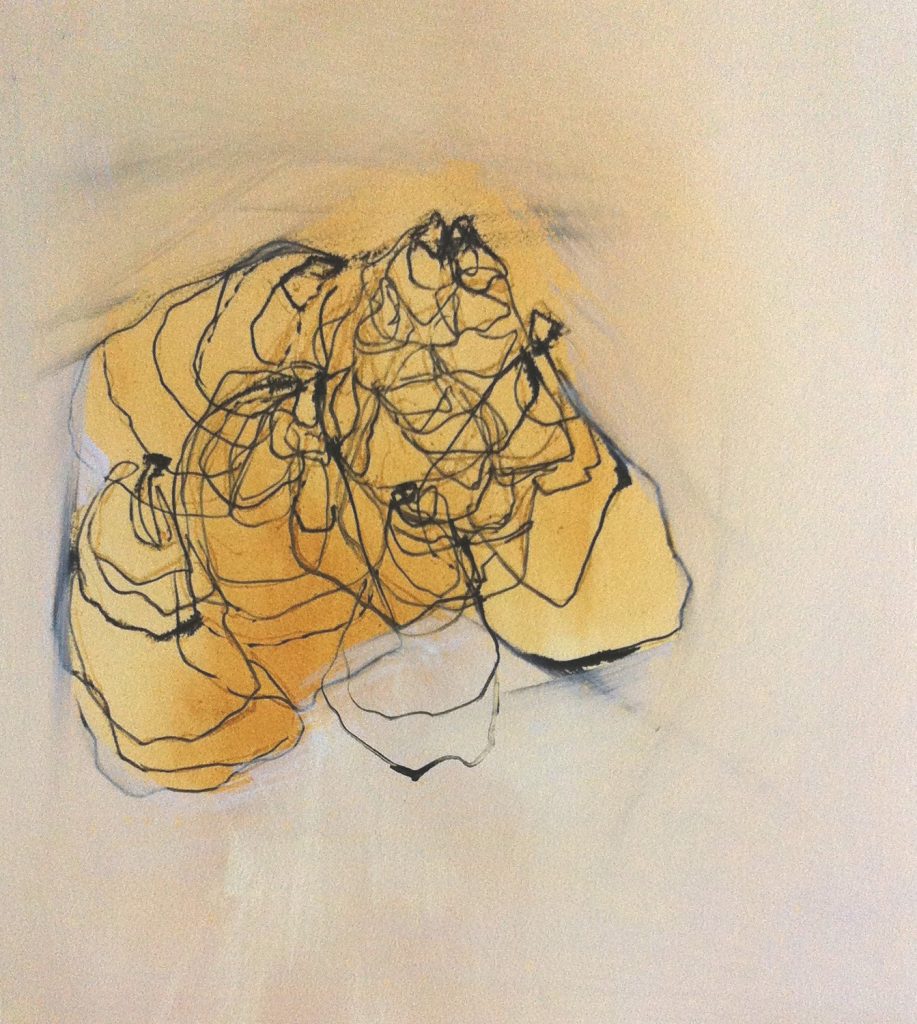
Dudley Zopp, Gold Oysters, watercolor, gesso, charcoal and sumi ink on Fabriano paper, 17 by 15 inches, 2014
Share on Social Media
When my work is featured, I get a letter telling me so and encouraging me to share my work with my followers on social media. This tells me the curators are encouraging us to promote ourselves. Whenever I put up a new work, I Instagram and tweet and put it on Facebook as new work now available on Saatchi Art. I make sure I tag it with #Saatchiart as well as other relevant hashtags.
Also, about Instagram, I notice you don’t use many, if any, hashtags. I think it’s good at some point if you do a little research and find the ones best for you and use them often. Perhaps find other artists who are further along in their careers with similar works—check out their hashtags. I think it’s important. I have sold from Instagram, but you do have to work at it.
Follow Saatchi Art on Facebook, “like” posts, and comment and be active.
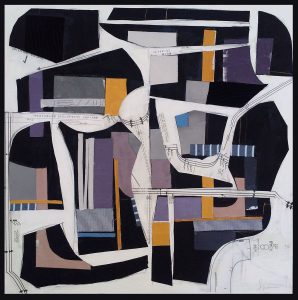
Susan Washington, Montaigne IV (2016), vintage dress patterns, textile, and acrylic on canvas, 36 by 35 inches.
Someone on Facebook recently posted that they have joined the other “shameless self-promoting artists” on Saatchi Art. People were chiming in to say how Saatchi Art is a “pain in the ass” or “too much work” It made me laugh, but I did say to him it’s obvious you want to try selling online as you created your profile and uploaded art. You should be happy that you have a reputable platform for doing that. And unless you are lucky enough to have a gallerist who is going to work for you, then you really have to take marketing your work into your own hands. It’s time-consuming, and I would much rather spend my time in my studio. But I want to sell my work and I have to take the business side just as seriously as the art side.
I have pushed myself so hard (but I love it and the results). I paint every single day. I critique my work, really analyze it and then take on the good elements to the next work, so that it has been growing. So much so that less than a year ago I had a collector in Brussels purchase 21 large pieces through Saatchi Art; a collector in Houston bought 12 large pieces; another commissioned four new works for her penthouse. It’s been crazy good. But I definitely have down times (I think all artists do) where you question and doubt. Two years ago I started a journal suggested by a good friend and artist, Ian Summers. When I have those fabulous moments, I note them down. When I have those days where I am pulling my hair out and about ready to dump everything in the garbage, I read about my successes and it pushes me to push through everything.
Susan Washington’s Short List of Tips
- Use high-quality, accurate images on Saatchi Art. Potential collectors are relying on what the site shares to make a decision about which work to purchase. With high-quality photos, a possible client can expand and see details of the images. (I imagine it would be really disappointing for a collector to receive a piece and have it be completely different from what was seen online.)
- Take advantage of the multiple-image feature on Saatchi Art’s artist profiles. Again, for the same reason as above. You are giving potential buyers more information and they will feel confident that what they see is what they get.
- Add new work. It shows the artist moving forward and gives the curators more opportunity to feature work in the “New This Week” collections.
- Keep “sold” work in your portfolio, but just make sure it’s marked that way. I think collectors like to see that an artist is actively selling work. It also shows an expanded portfolio, and if someone comes along and likes a piece that’s no longer available, he or she can always put in for a commission.
- Keep your about/events/bio current. I add in exhibitions events, etc., as they happen. That helps give the whole story on an artist. From time to time, I’ve uploaded images of my exhibitions or studio shots. And that helps contribute to the overall picture potential collectors have of the artist.
Susan Washington is a native New Yorker who currently lives and works in the Poconos. Her work has been exhibited internationally, with representation through the Artspace Warehouse in Los Angeles and Susan Calloway Fine Art in Washington D.C. She is working on a series of new works titled “Deconstructed,” which will be exhibited at the Affordable Art Fair in Chelsea through Artspace Warehouse as well as at LaChaise Gallery at Cedar Crest University in Allentown, PA. More about her can be found at www.susanwashingtonfineart.com
Top image: Susan Washington, It Could Be Sweet (2016), acrylic, textile, and paper on canvas, 36 by 48 inches
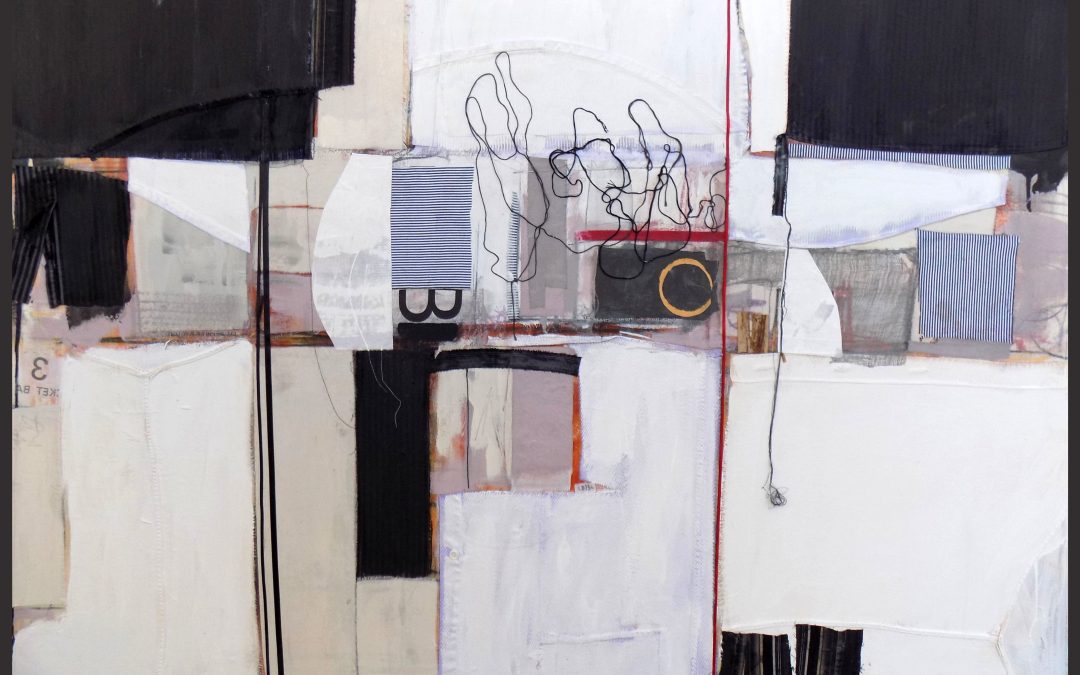
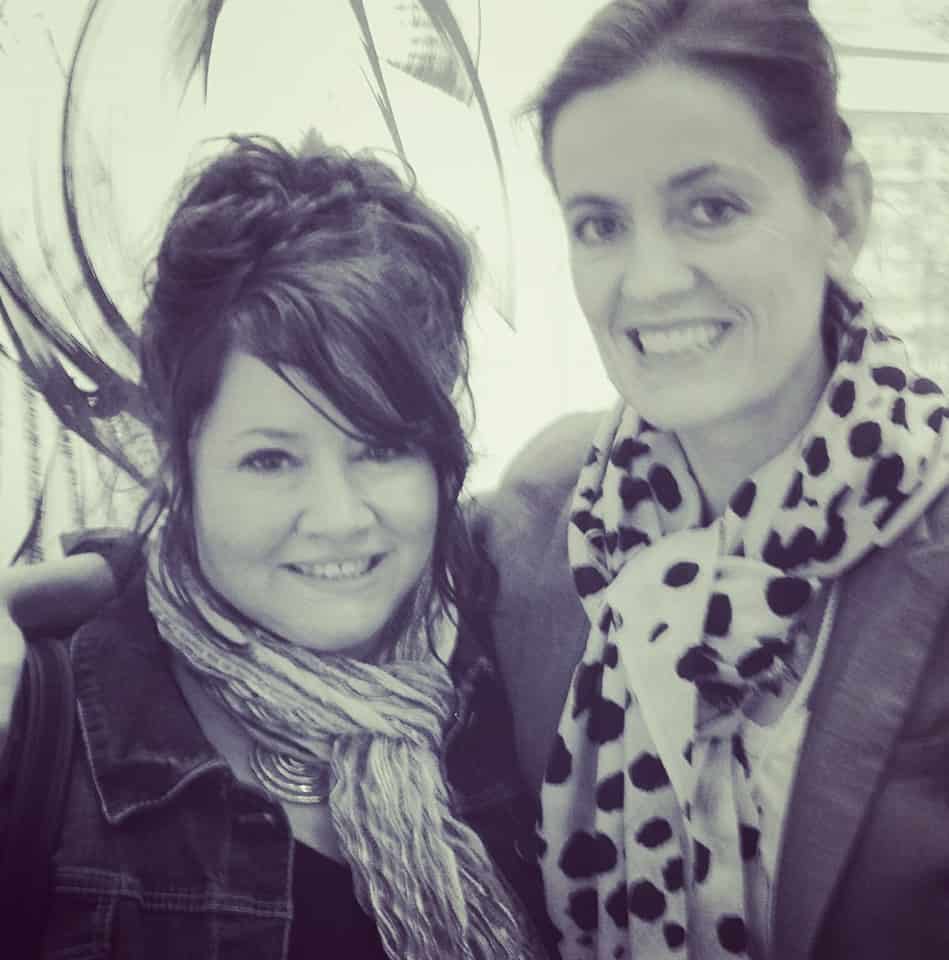
Great information. I tried Saatchi on line when it first started and gave up a year later. This makes me what to try it again. Thanks Ann.
Huge thanks to Susan Washington for giving such useful advice!
Thank you for this article. I found it informative and helpful. I am considering Saatchi as a POS site and would like to hear both positives and negatives to selling artworks and prints there. In addition, I am pleased to have discovered Vasari21! I plan to take a look around and explore this site as well!
Thank you, Ann, and again, huge thanks to Susan for your encouragement and in-depth comments. I know they will be helpful to many many artists.
Susan’s work is over the top wonderful! Ann, thanks for posting this.
Thank you for providing such down to earth, useful advice for online selling.
Thank you for this valuable information. I know artists who have made some very good sales on the site and I’ve been wanting to get involved. I appreciate these tips and am inspired!
Thanks Ann & Susan. I really appreciate the information. I’ve been on Saatchi for several years and have sold but this article is going to motivate me to get with the program. Clearly I need to spend more time on the site rather than just uploading images and hoping for the best. I’ve been part of a collection chosen by Rebecca Wilson and did send her a thank-you note. But I haven’t been following any artists on Saatchi because I thought it was potential collectors who supposed to do the following—and I’m still not clear why this is helpful but I’ll certainly do it. Not to be dumb, should I be contacting all those people on my Recent Activity page? There’s a whole line-up of them…are they artists, potential collectors—are these my followers? As you can see I’m kinda clueless (just ask Ann, ha!)
Hi Barbara! I am just sharing what I do. I can’t say that any one thing has contributed to my sales or not, only that I am very happy with the sales I have had on Saatchi Art. I too at the beginning a few years back just went on and created a profile, uploaded a few photos and left it at that…for almost a year. Of course I didn’t sell anything. It was not until I went back and did a lot of the things I mention here that I felt I got traction.
That being said, the reason why I recommend to follow artists and “like’ work that you really do like is because I feel it adds to your exposure on there and the viral effect you get. Also, I notice (and again, this is just what I have gathered on my own) that if I like someone’s work on Saatchi Art it eventually sometimes it shows up on Google when you search.
No, I would’nt suggest contacting the people on your activity page. Some could be collectors, some could be artists. Not all are followers; they could be on the page because they “liked” one of your works. If they are collectors I wouldn’t bother them, they know you are there and they liked your work and often they just need time to make decisions. Just because they like our work doesn’t mean they will buy….and I have had buyers purchase but never even like the work! Go figure lol I hope this helps.
Thanks for your response Susan, yes this helps. I’ve got a list of stuff to do to update & make better use of the opportunities Saatchi provides thanks to your generous information. And to Ann Landi for Vasari21 of course!
Thank you Susan for this insightful, informative and passionate sharing and to Ann Landi for creating and publishing this interview. I met Susan a couple of years ago when she came to me for promotional advice. Ironically Susan has become my teacher and dear friend.
Thank you susan for sharing this information! Much appreciated!
Thank you Susan. What wonderful words of wisdom you have shared.
This is very important information. You have to be more active than just uploading new work. Thank you for detailed information.
Thanks Susan! I was pointed to your articles by my brother, who is a collector. I started posting on Saatchi last year and have continued despite no sales. Your article (as well as the comments!) has made me more comfortable with putting time and energy into closer engagement with all social media as well as Saatchi. I am happy to have found a site that is geared toward working artists and is truly useful.
Thank you for sharing. I found your article really helpful.
I have not sold a single thing.
I’m so sorry to hear that!
Thanks so much for all the information about your experience online Saatchi. I’ll take another look at them.
Thank you Ann for reviewing your archives for this article. I established a website in 2002 before others began to do so and sold from the site early on. I have since moved on to direct sales, but my nephews have encouraged me to join the new platforms that are available. It seems a bit overwhelming, to say the least, but Susan validates the effort to jump back in. I will be doing my homework and I know the business of art is part of the process. It is ever changing but a necessary part of the equation of being an artist and getting your work “out there’.
Thanks, John–I’m trying to find out more about other platforms, like ArtPrice, as well. As soon as I have some time!
Ann, by all means, do what you do so well and keep us informed.
Thank you Ann for this wonderful information about Saatchi. I am someone who has dabbled in art for many years but just now beginning to take it to the next level, really hone in on on my style and make something I’m proud of. Saatchi was recommended to me by someone as well as a couple other sites but this sounds like the right place for me and your information will help me tremendously in making a good impression on the site.
Thank you again
Thank you, Ann, for the great article. I just started with Saatchi about 4 days ago and have my first 8 pieces up and counting at https://www.saatchiart.com/cgreenstudio. It was great to see these suggestions at this time so I can start forming good habits from the get go.
I have allowed my Saatchi page go fallow for the last couple of years. I’m ready to start anew and really appreciate your insights.
Thanks Susan! Some very good and usefull tips that will definitely help me. Much appreciated!
Thank you, Ann & Susan. Okay, I get it now. It is not enough to do what I’ve done: upload work and wait… 🙂
I’m in the midst of working on a series I plan on sharing with everyone through Saatchi art. This advice and tips will be extremely helpful as I move forward.
Thank you so much Susan, I just finished uploading a collection of art work to Saatchi and I am sure your tips will be helpful to get me started.
Thank you Ann and Susan for a great article. I’m just starting out on Saatchi so really great to hear this.
I’m on Saatchi and plan on using these tips! Thanks you Ann & Susan!!
Thanks Susan! I tried out the platform awhile back but didn’t do too much with it back then.
This article is super insightful and prescriptive and had pushed me to do a few things you’ve suggested on my profile (https://www.saatchiart.com/rubychu).
Looking forward to learning more from you!
Thanks for the great information Susan ! I enjoyed seeing your work….wonderful ! I have been working without exhibiting and reading the article has inspired me to move with Saatchi Art. Thanks again !
Hi Susan, Can you tell me a little about how Saatchi wants artists to crate their work? This has been a stumbling factor for me-I was interested in trying to sell on Saatchi but the cost of crating put me off.
Hi Patricia! Sorry for the delay in responding, we are just seeing this now. Don’t be put off by it! I was so nervous in the beginning packing my work, you really do have to be careful because if anything does happen to it in transit you are covered as long as the packaging was according to their guidelines. It’s really to protect us. Also, you only have to crate things that are 3’x4′ and over (I believe – you might want to double check but that is what it used to be and that’s what I go by). This is a link to their website that shows you what is expected and how to crate https://support.saatchiart.com/hc/en-us/articles/205288907-How-do-I-pack-work-in-a-crate- Sometimes my husband builds my crates but I have a local handyman and I have him do them often for me, we worked out a price and materials to be used and he does them at a very reasonable price. Another option is https://masterpak-usa.com/ I think it was last year Saatchi Art sent an email saying that we could use those boxes if we choose to instead of crating. I have not yet but its a good option. Also they have a couple of warehouses and if you live local to them you can pick them up which save on shipping costs. I have incorporated the price of packaging into my works. I’m not very handy with the crating thing so I cant build them myself but maybe these directions would help you. Good luck!
Thank you – lots of info I was clueless about. I was featured in a collection once, but had no way of finding it! Even though I’m just reading this today – it’s still very relevant. Thank you so much!
My pleasure, glad you found it useful. Usually when you are featured by one of their curators you will get an email telling you and a link to the collection.
Dear Susan, Thanks so much for your response. It is a little daunting but I am thinking of giving it a try. Thanks!
Hi. Thanks for a very insightful article! I have one question though: how do I comment on the “New Feature” sections? There doesn’t seem to be any place to enter a comment.
I’m not sure what you mean by “new feature”….
Thank you Ann and Susan. I’ve just listed in recent months and all the comments above (though they’ve been going on for some time now), are more than useful. In addition to your good advice the comments from artists writing in makes me realise I’m not alone with questions and concerns… comments from various artists are clarifying as well. I find that liking others works is simply stimulating and sometimes I want to engage with the other artists… lots of work to do. Thanks.
Brilliant time advice .I’ve been considering selling with saatchi art for a while, now I will definately give it a go.Thankyou.
I am a beginner at Saatchi, one of my artworks was curated one one time on Artmajeur for two weeks, even still haven’t sold anything. but I do my best. thanks for your article. ( my artwork on Saatchi, https://www.saatchiart.com/account/artworks/1683718 )
Thank you!
Thank you so much for this information. I am just beginning with my artistic career and I hope the written above will help me :).